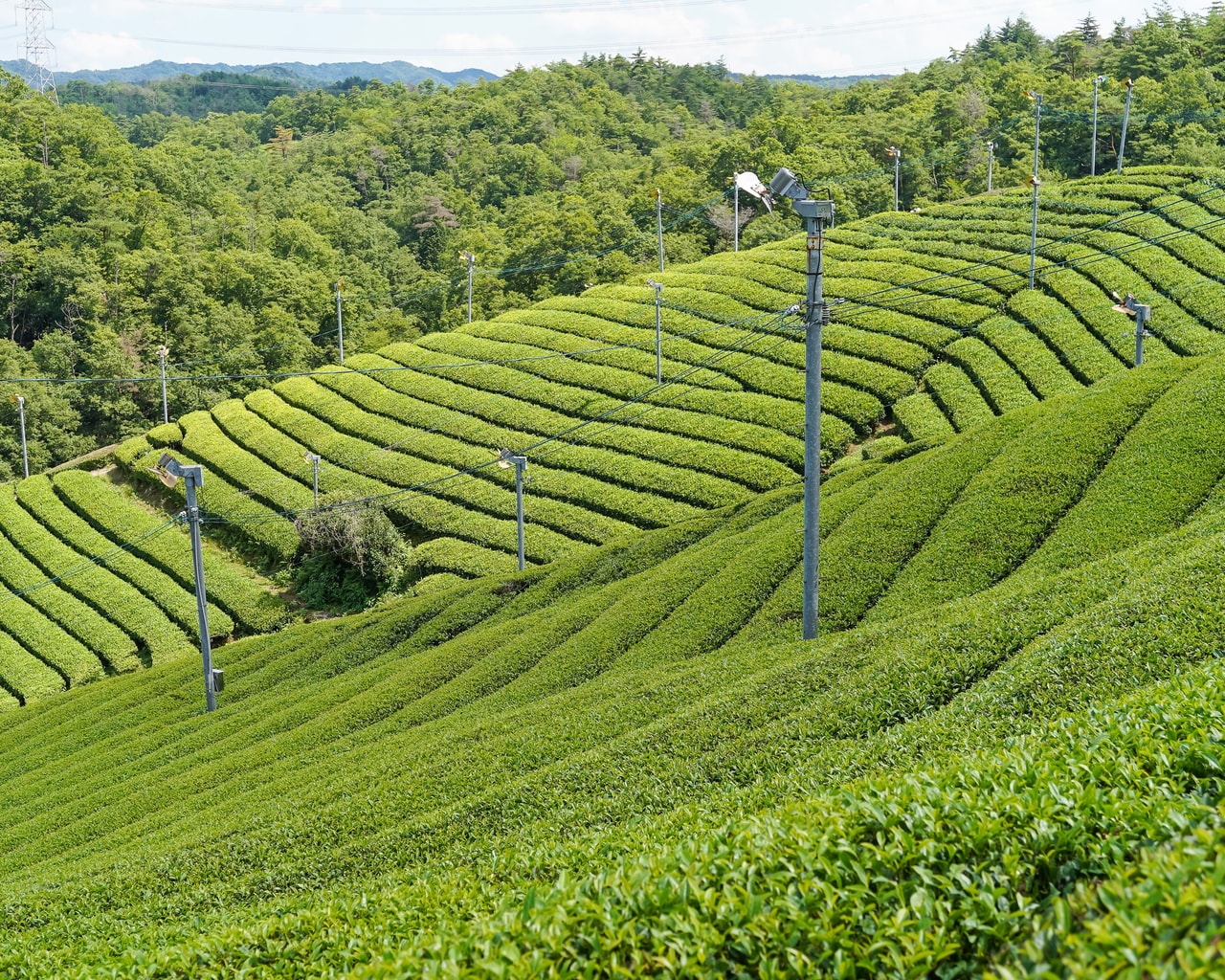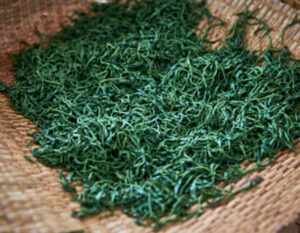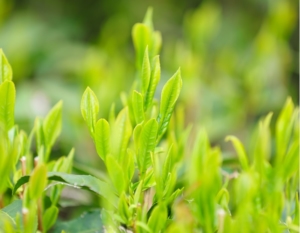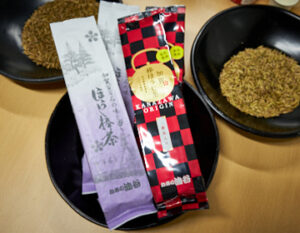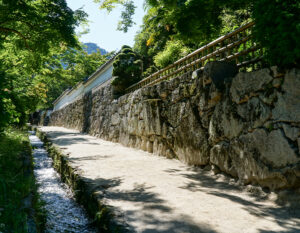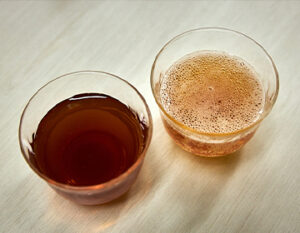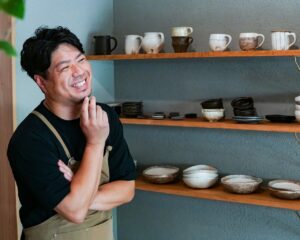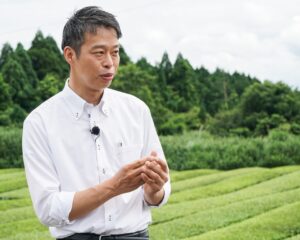Asamiya Tea Katagi Kokaen is located in Shigaraki Town, Koka City, Shiga Prefecture,
It is a long-established tea garden that produces Asamiya Tea, one of the oldest in Japan.
They cultivate their tea completely without pesticides using only plant-based organic fertilizers and by hand.
The traditional Asamiya tea has a robust flavor and aroma that is inherent to the tea,
We continue to produce high quality teas that are gentle on the body.
Asamiya, a tea production area that has existed since tea was first introduced to Japan 1,200 years ago, is a village in the mountains of Shigaraki Town in southeastern Shiga Prefecture, known for its Shigaraki ware. The large difference in temperature between morning and evening is a source of quality tea leaves with a distinctive aroma and mellow flavor. Katagi Kokaen, which has been in the tea business here for generations, has taken on the challenge of cultivating tea without pesticides, which is not an easy task, and aims to produce world-class Asamiya tea.
Asamiya, a premium tea production area that has been in existence for 1,200 years

It is said that Japanese tea ceremony began 1,200 years ago when Saicho, later to become the founder of the Tendai sect of Buddhism, brought back tea seeds from China and planted them at the foot of Enryaku-ji Temple on Mt. Asamiya, a tea production area that has continued since that time, is located in the Shigaraki Basin, south of Lake Biwa, on a plateau at an altitude of 300 to 500 meters. The area has ideal conditions for tea production, with a large difference in temperature between morning and evening, and the Shigaraki River valley, which tends to generate fog. The area is also blessed with high-quality water from the granite strata, which has been presented to emperors as ” fragrant Asamiya-cha,” a famous tea of high quality.
Rich green tea fields in the mountains
Driving through Shigaraki town, lined with pottery stores, to Asamiya, tea fields appear on the slopes of the mountain. The haiku poet Matsuo Basho, who visited this area, is said to have composed a poem entitled “Hiding in the Trees and Hearing the Tea Plucking, Hottogisu. The beautiful scenery of the tea fields, almost unchanged from that time, is a comforting sight.
Asamiya Tea,” known by those in the know, is now a single brand

Katagi Kokaen has been cultivating tea in the highest area of Asamiya, at an altitude of 450 to 500 meters. Currently, the seventh generation, Mr. Takatomo Katagi, is the head of the company and produces a variety of teas, including sencha, hojicha, oolong tea, and tencha.
Until a decade ago, Asamiya tea was mostly wholesaled to Uji and blended with tea from other regions and sold as high-end Uji tea, so it was completely unknown to the general public. My grandfather and father started selling Uji tea directly to households because they thought it was a waste of the delicious tea they were making,” he says. After Katagi-san took over the business, he began to put more effort into selling tea at his store and online, and is now the leading producer of Asamiya tea in both name and reality.
From father to son. A commitment to pesticide-free farming passed down from father to son.
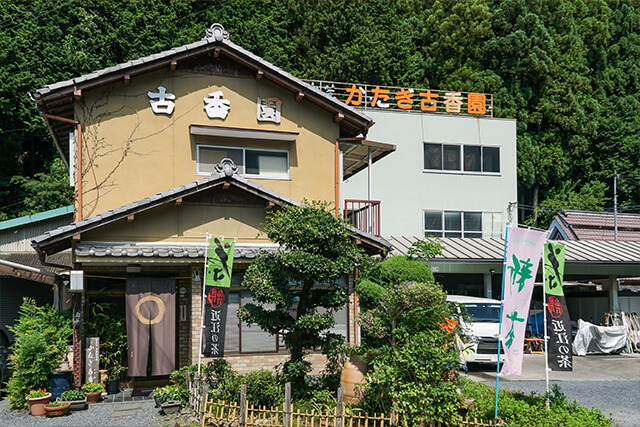
What sets Katagi Kokaen apart from other tea growers is its pesticide-free cultivation: since 1976, all tea fields have been cultivated without the use of any pesticides and with minimal fertilizers. My father is a bit of an eccentric. He started growing tea without pesticides by himself because he felt he had to give his customers, who came to see him and buy from him, something they could drink with peace of mind.
At that time, it was common practice in the tea industry to use pesticides to prevent insect infestation and disease in order to increase production. It was a challenge that went against the grain of the times.
Tea leaves are processed without washing.

Unlike vegetables and fruits, tea leaves are processed without washing after being harvested from the fields. They are then put in a teapot, poured over with hot water, and drunk.
On the day I returned home after spraying with pesticides, I felt more sluggish than usual. This discomfort may be due to the pesticides. I thought, I can’t give pesticide-laden tea leaves to customers who buy it because they say it tastes good. The decision was based on his realization of the fear of pesticides.
Starting out by hand, without a role model
He searched for people who were growing tea without pesticides, but although there were people who were growing small amounts of tea for their own use, no one was growing tea without pesticides as a business. He had no choice but to start by hand. He decided to start growing tea in all of his tea fields at once.
The first two or three years,” he said, “we could hardly harvest anything because of diseases and insect pests. The surrounding tea farmers didn’t understand, saying, ‘It’s like growing insects instead of tea,’ but my father didn’t give up,” he said. But my father never gave up.” He had to work at other jobs to make a living, and the hard work continued.
Finally, in the third year, new shoots appeared.
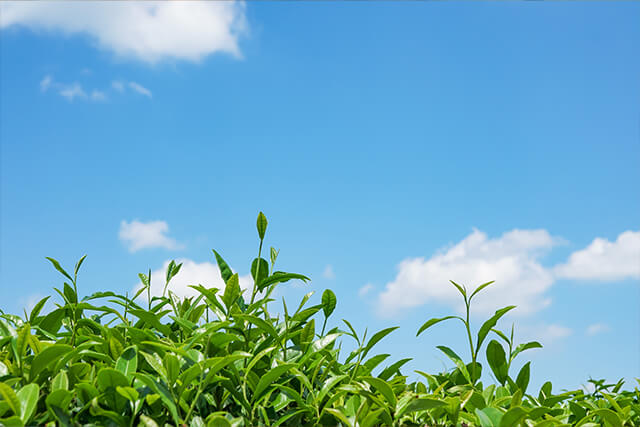
In the third year, after much trial and error, the trees began to sprout new shoots. Thanks to the fact that we did not spray a drop of pesticide, spiders, praying mantis, ladybugs, and other insects returned to the field. The resistance of the trees must have increased, too. Geographical factors, such as the fact that the tea plantation was at the top of the list and that there were few insects to begin with due to the cold weather, also seem to have played a role in the success of the pesticide-free cultivation. From that year on, yields increased year by year, and the soil became richer and richer.
Putting our heart and soul into the steady manual work
For more than 40 years since then, he has been growing tea using no pesticides and as little fertilizer as possible, in an effort to bring man and nature into harmony.
The most difficult part of pesticide-free cultivation is weeding. If the weeds grow too much, they take all the nutrients from the trees, so we have no choice but to pull them out by hand,” he says. There are many hardships associated with pesticide-free cultivation, such as more manual labor and lower yields than expected. Even so, Mr. Katagi’s willingness to go to great lengths in pursuit of safety, saying, ” Tea is something people drink every day, ” is a belief passed down to him from his father.
From Weaknesses to Individuality. Asamiya tea with a clean taste
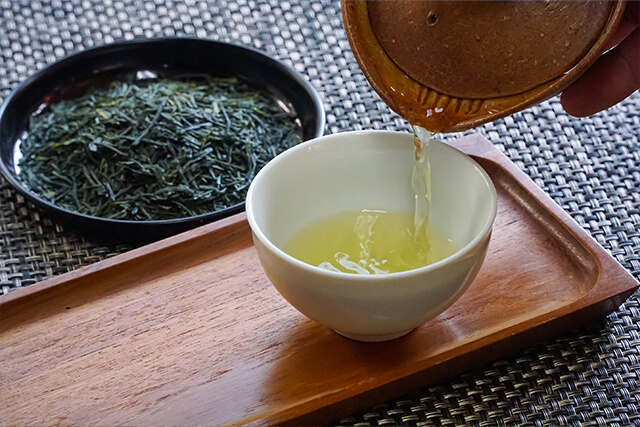
The tea leaves, which have been cultivated in a harsh natural environment, have a reputation for its original flavor. However, in the world of tea, the umami component is the most important factor in evaluating the taste. Chemical fertilizers affect this flavor. Therefore, if chemical fertilizers are not used, the tea leaves will inevitably have less umami. Mr. Katagi explains, “If we compare only the flavor, we may lose to other tea production areas that use chemical fertilizers. However, based on our experience, we have found that using organic plant-based fertilizers such as rapeseed oil and sesame oil pomace enhances the aroma of the tea. Asamiya’s native varieties have always been characterized by their aroma, and we hope to further develop the aroma,” he says.
Passing on Asamiya Tea to the Next Generation
The tea industry faces many challenges, such as theaging of producers and declining demand for tea due to the diversification of beverages. The same is true in Asamiya, where there are currently 35 tea farmers, but few of them are of the younger generation.
I decided to follow in my father’s footsteps because he took pride in his pesticide-free cultivation. I am now looking for new added value in addition to pesticide-free cultivation so that my son will want to take over the business with the same pride.
Passing on Asamiya Tea to the Next Generation
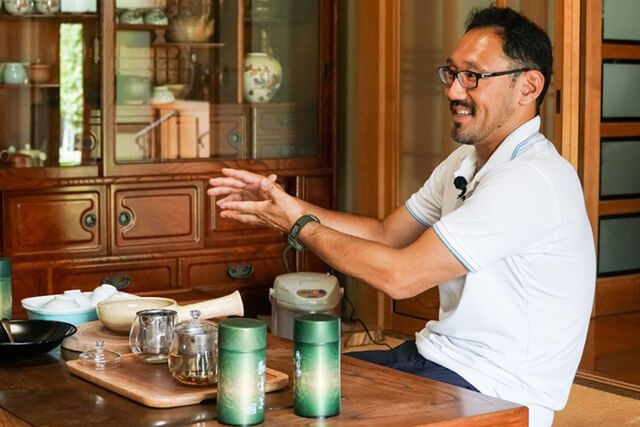
Katagi-san’s current target is the state of Michigan, Shiga Prefecture’s sister city in the U.S. About five years ago, he began selling his tea there. In Michigan, Japanese tea is still almost unknown. I want to bring Asamiya-Cha to people all over the world, but first of all, I want Michigan people to think of Asamiya-Cha when they think of Japanese tea,” he said. In fact, at a sales event in Michigan, Asagucha was well-received as ” refreshing and easy to drink,” and the company is feeling a positive response.
Although tea consumption in Japan is on the decline, Japanese tea is attracting more and more attention worldwide due to the growing health consciousness and the Japanese food boom. In fact, exports to the U.S., Taiwan, and Europe have quadrupled in the past 10 years. Asamiya tea has a good chance of becoming a world-class Japanese tea.
Asamiya Tea will not abandon its commitment to pesticide-free cultivation, but will enhance its quality and brand power. Mr. Katagi is the one who will lead Asamiya-cha to the next generation and beyond. The challenge of Katagi Kokaen, which has been passed down from generation to generation in Japan’s oldest tea-producing region, will continue in the future.
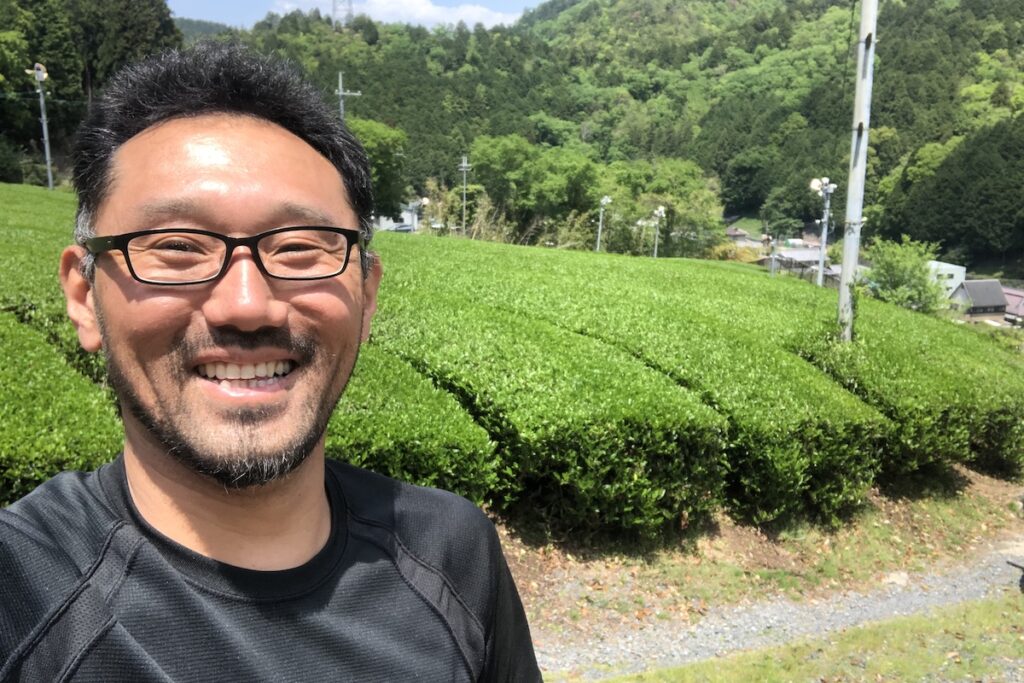
We cannot mass-produce tea due to our commitment to completely pesticide-free cultivation and careful handwork, but we are proud of the high quality of our tea, which is healthier for the body. This tea is suitable not only for private use but also for gift-giving. We hope you will taste the original flavor of the tea produced by the tea tree itself.



